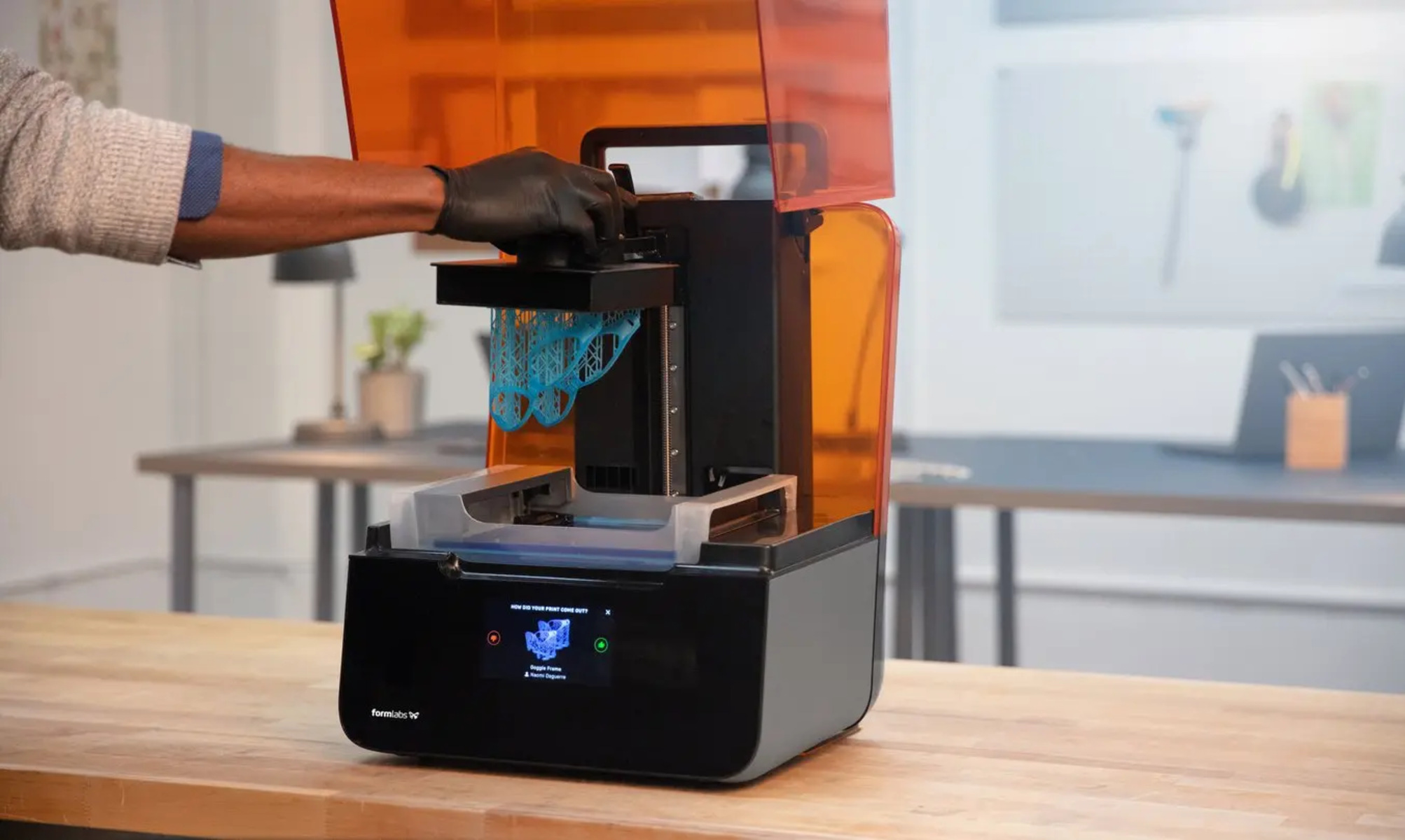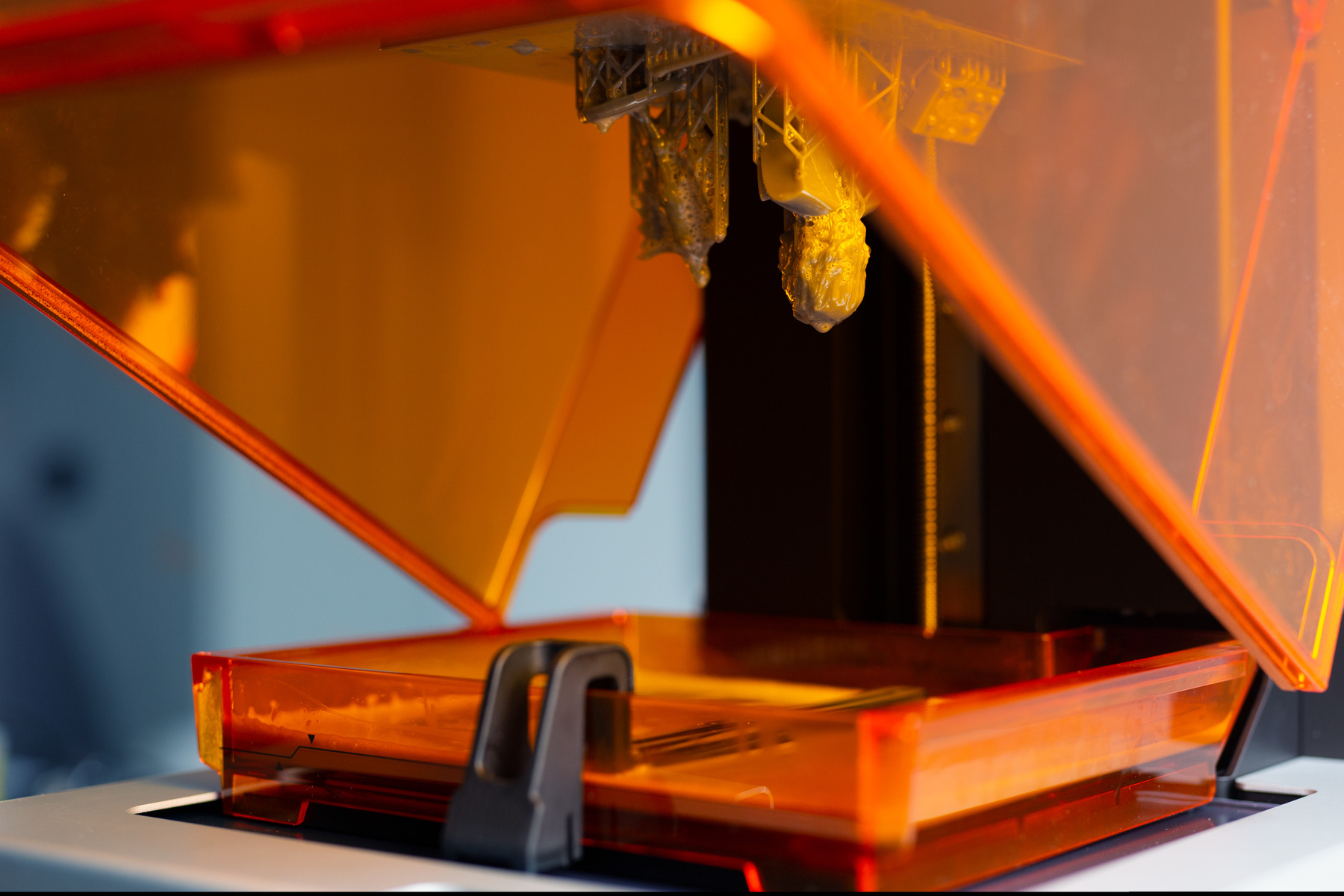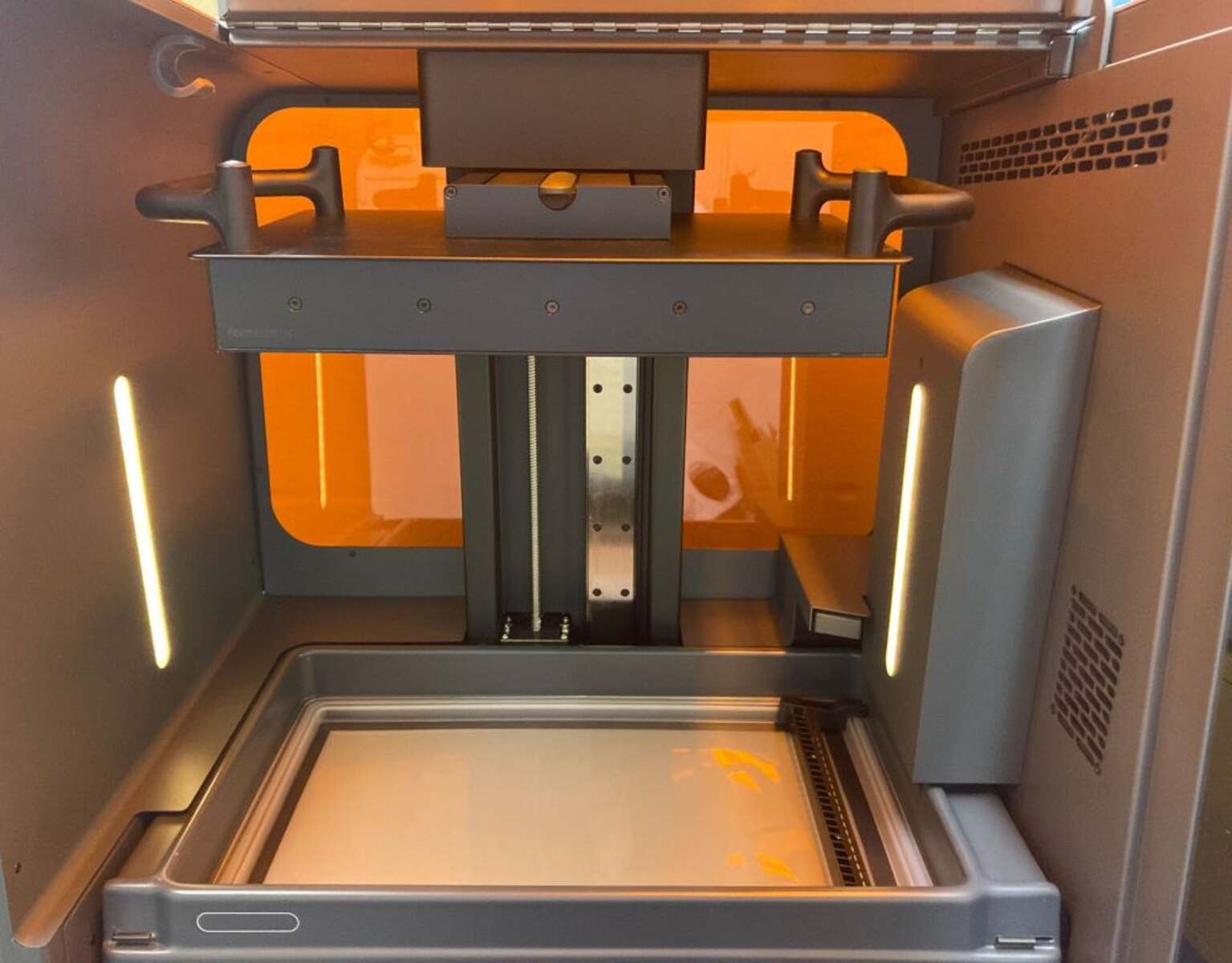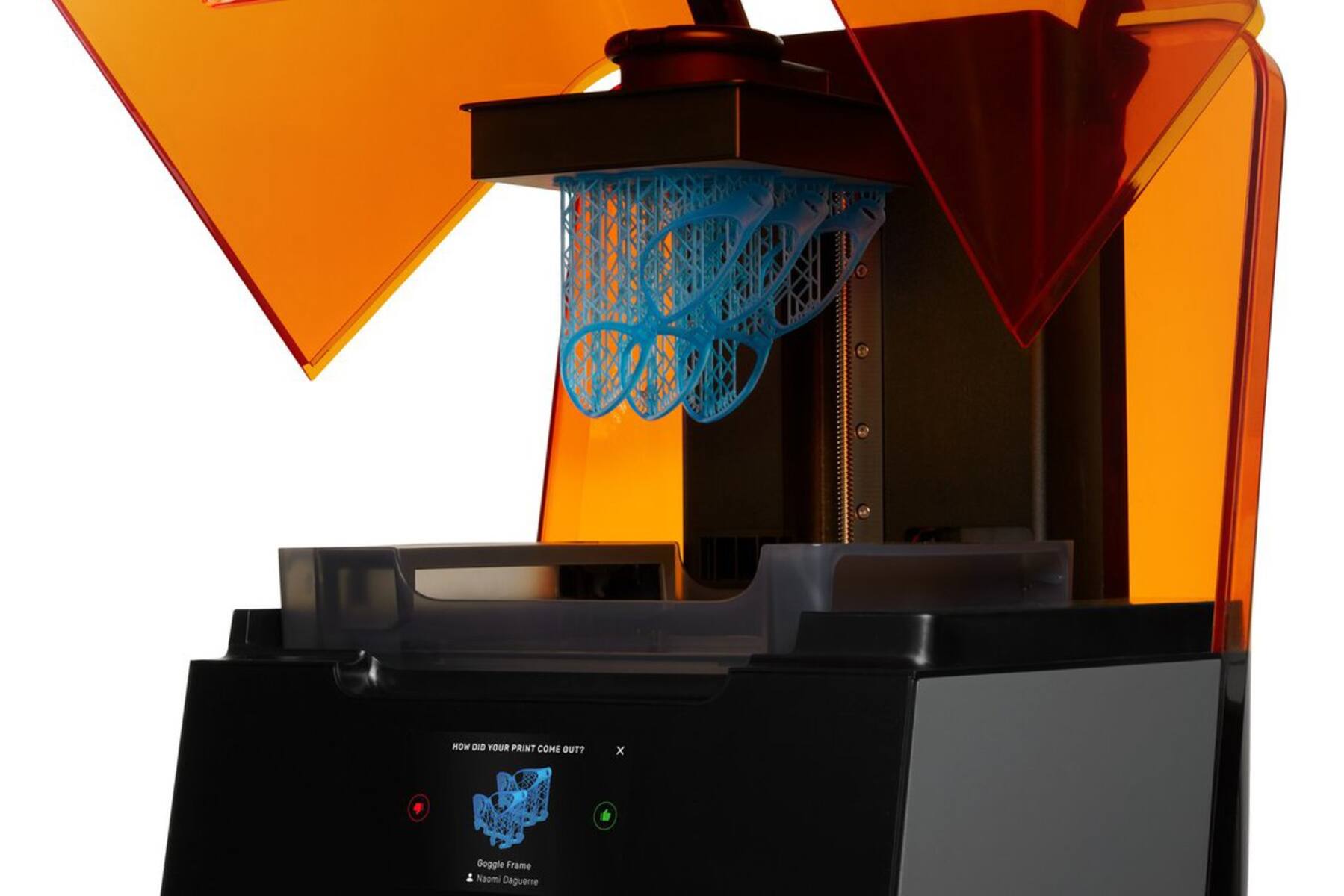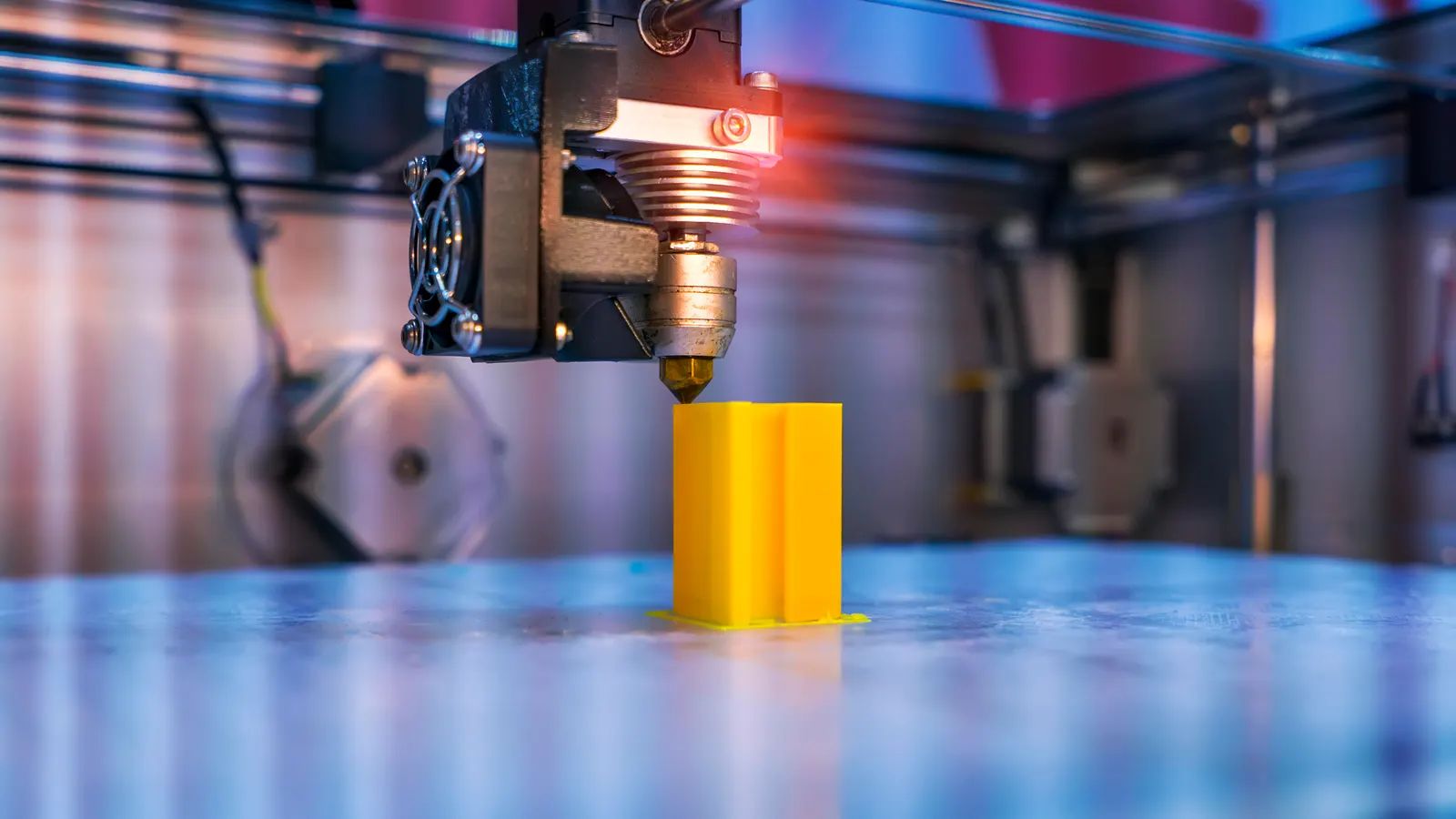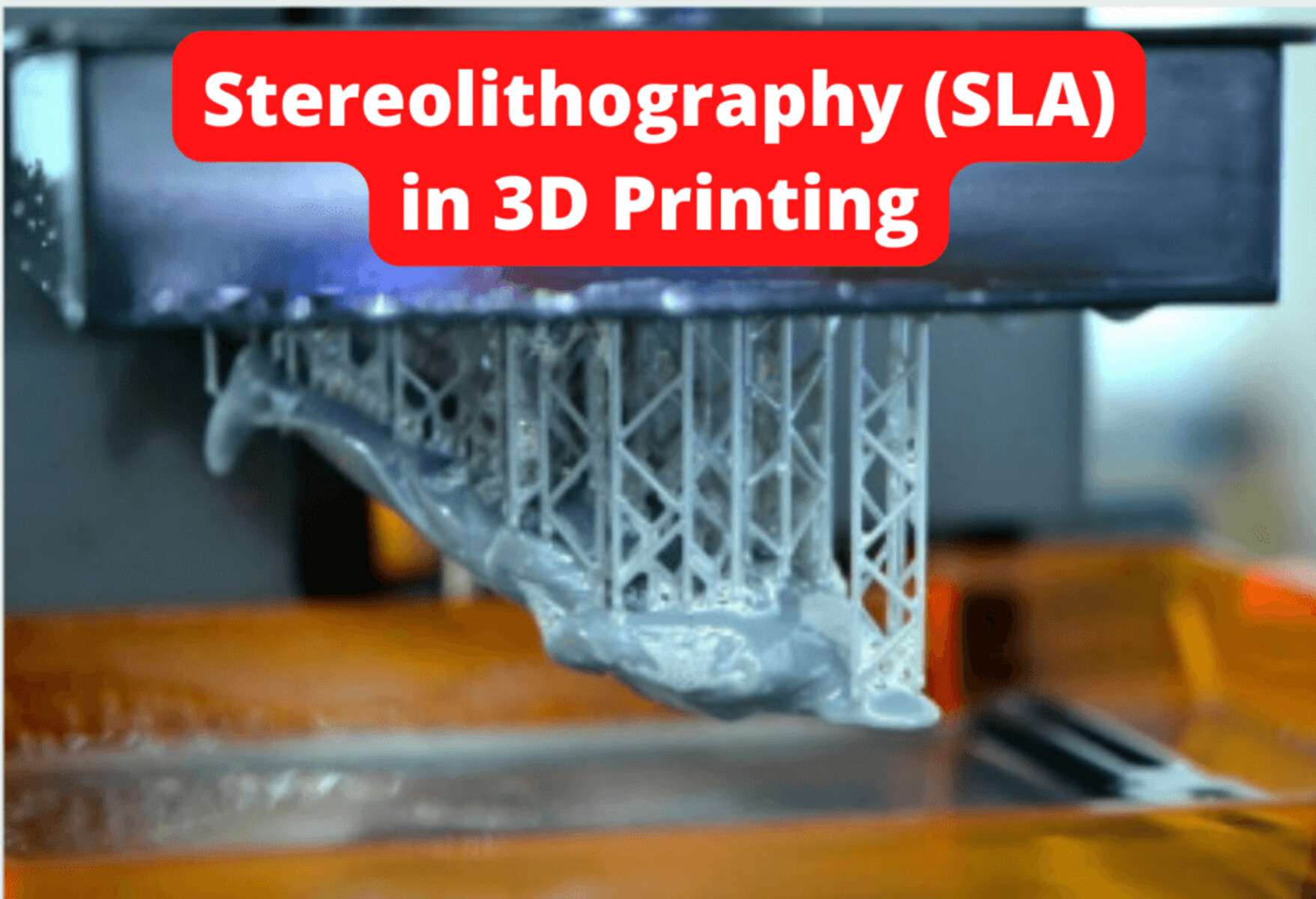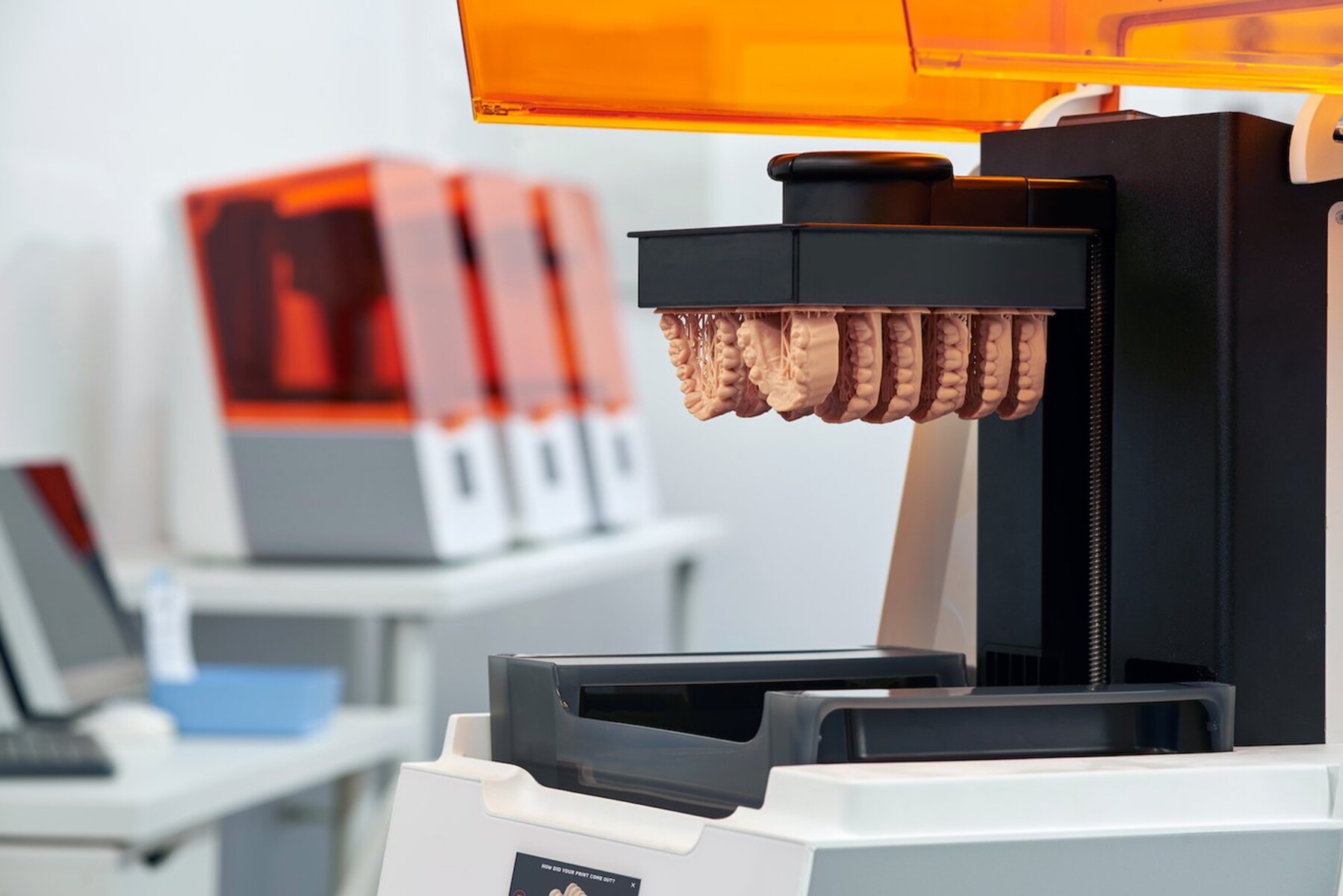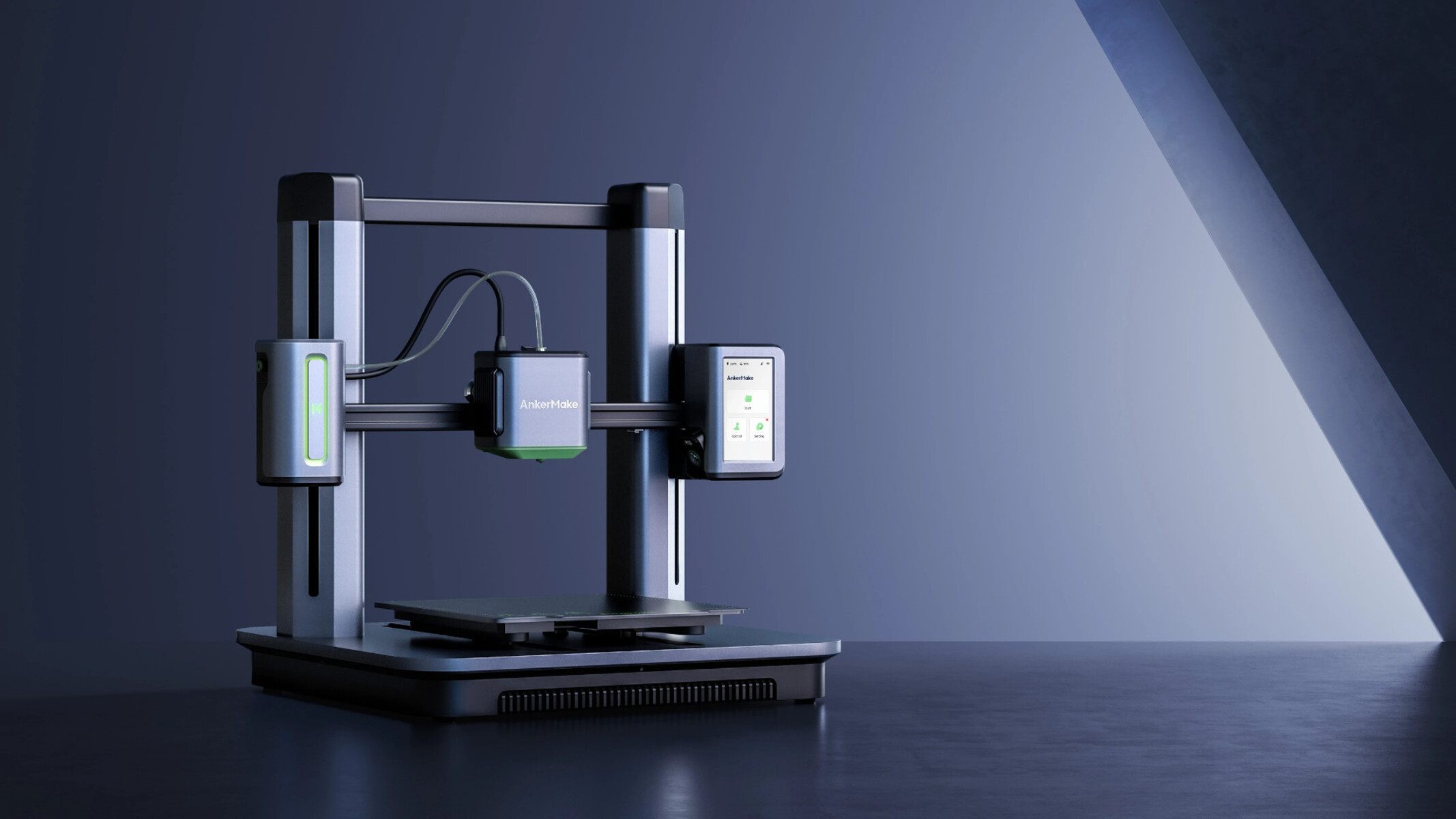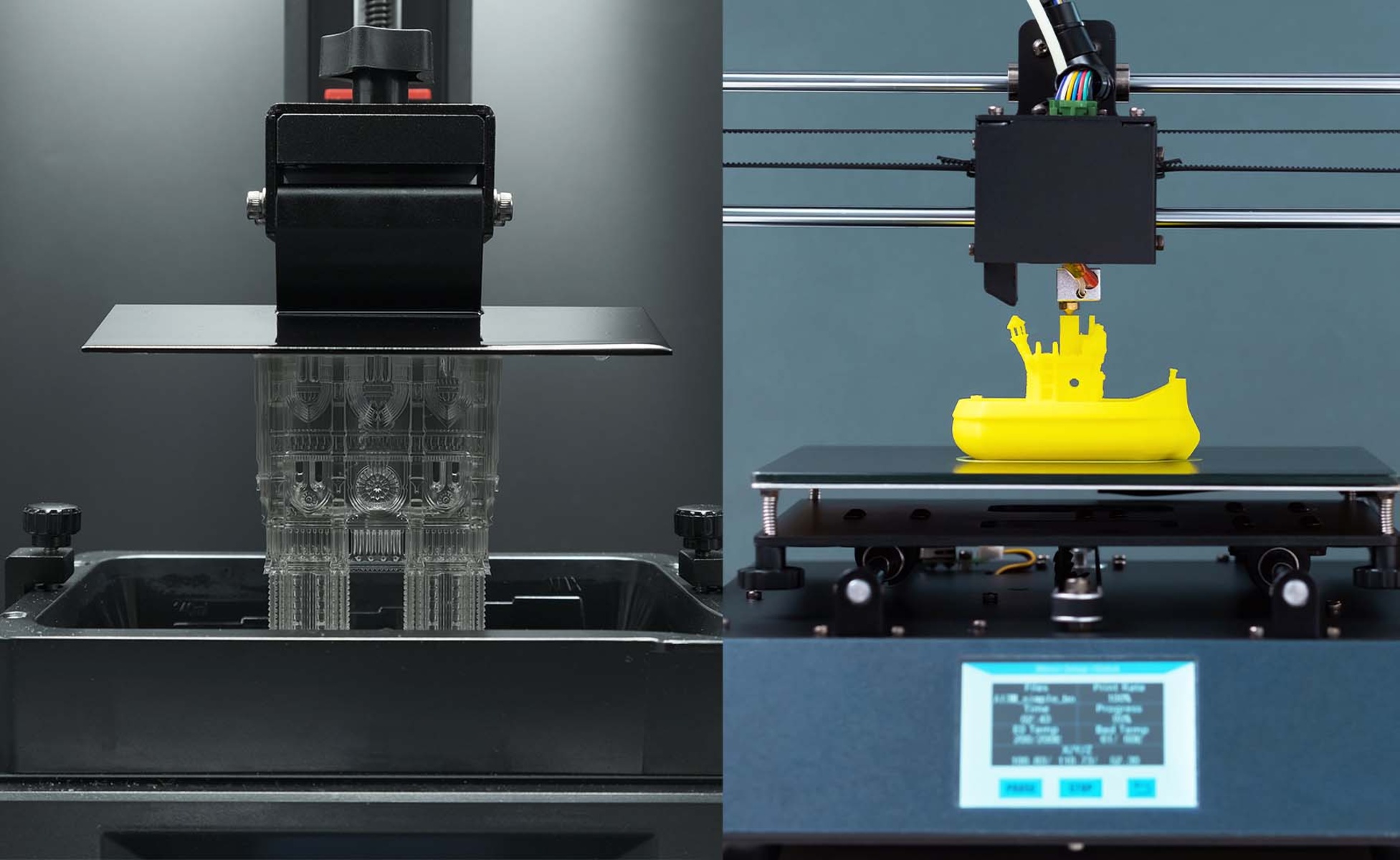Introduction
When it comes to 3D printing, one of the most popular and versatile techniques is SLA (Stereolithography) printing. SLA printers use a special type of material that is transformed from a liquid resin into a solid object through a process known as photopolymerization. This technology allows for the creation of intricate and highly detailed objects with a high level of accuracy.
In SLA 3D printing, the choice of material plays a crucial role in determining the final quality, strength, and functionality of the printed objects. The type of material used in SLA printing primarily falls into two categories: resins and thermoplastics. Each material offers unique properties and characteristics that make them suitable for different applications.
In this article, we will explore the various types of materials used in SLA 3D printing, including resins and thermoplastics. We will delve into their features, strengths, and applications, providing valuable insights for both beginners and experienced users of SLA printers.
Whether you are a hobbyist looking to create intricate models or a professional seeking functional prototypes, understanding the different types of materials used in SLA 3D printing will help you make informed decisions and achieve excellent results.
Resins
Resins are the most commonly used materials in SLA 3D printing. These liquid polymers undergo a chemical reaction called photopolymerization, where ultraviolet (UV) light is used to transform the resin from a liquid to a solid state.
There are different types of resins available for SLA printing, each offering specific properties and applications. Let’s explore some of the common resin materials used:
Photopolymer
Photopolymer resins are widely used in SLA 3D printing due to their excellent resolution and smooth surface finish. They are ideal for creating highly detailed models, intricate designs, and small-scale objects. Photopolymer resins come in various colors and transparency levels, allowing for customization and visual appeal.
Acrylate
Acrylate resins are known for their durability and strength, making them suitable for functional prototypes and parts that require mechanical properties. These resins exhibit good impact resistance and are often used in engineering applications where toughness and reliability are crucial.
Epoxy
Epoxy resins offer exceptional mechanical, thermal, and chemical resistance properties. They are commonly used in industries such as aerospace and automotive for creating heat-resistant components, electrical insulation, and high-performance parts.
The choice of resin depends on the desired properties and intended usage of the printed object. It is important to consider factors such as strength, flexibility, durability, and heat resistance when selecting the appropriate resin for your project.
One of the advantages of using resin in SLA 3D printing is the ability to post-process the printed objects by sanding, painting, or coating them for a smooth and finished appearance. However, it is important to note that some resins may require additional post-curing with UV light to ensure the final object’s stability and strength.
Overall, resins offer a wide range of possibilities for SLA 3D printing, allowing users to create intricate and functional objects for various applications. Whether you are working on art projects, engineering prototypes, or even dental models, choosing the right resin will greatly influence the success and quality of your prints.
Photopolymer
Photopolymer resins are a popular choice for SLA 3D printing due to their exceptional resolution and smooth surface finish. These resins undergo photopolymerization, a process in which ultraviolet (UV) light is used to cure the resin, transforming it from a liquid to a solid state.
One of the key advantages of photopolymer resins is their ability to achieve high levels of detail and precision. They are capable of capturing intricate features and producing smooth surfaces, making them ideal for creating highly detailed models, miniatures, and jewelry designs.
Photopolymer resins come in a variety of colors and transparency levels, allowing for customization and aesthetic flexibility in print projects. Clear or transparent resins can create objects with a glass-like appearance, while colored resins can add vibrancy and visual interest to the prints.
These resins are widely used in industries such as product design, jewelry making, and architectural modeling. The ability to achieve fine details and smooth finishes makes photopolymer resins suitable for creating prototypes, showcasing architectural designs, and producing intricate jewelry pieces.
Another advantage of photopolymer resins is their quick curing time. SLA printers equipped with UV lasers can rapidly solidify the resin layers, resulting in faster print times compared to other materials. This makes photopolymer resins an efficient choice for high-volume production and time-sensitive projects.
It is worth noting that while photopolymer resins offer excellent detail and surface quality, they may not possess the same level of mechanical strength as other types of resins. Depending on the specific photopolymer resin, the printed objects may be more fragile or prone to impact damage. Therefore, it is important to consider the intended use and durability requirements of the print before selecting a photopolymer resin.
Overall, photopolymer resins are a versatile and widely used material in SLA 3D printing. They offer exceptional detail, smooth finishes, and can be used for a variety of applications, including product design, jewelry making, and architectural modeling. With their ability to capture intricate designs with precision, photopolymer resins are a go-to choice for those seeking to create visually appealing and highly detailed prints.
Acrylate
Acrylate resins are a popular choice in SLA 3D printing due to their durability and mechanical strength. These resins offer excellent impact resistance and toughness, making them ideal for functional prototypes and parts that require reliable mechanical properties.
One of the key advantages of acrylate resins is their ability to withstand stress and loading without deformation. This makes them suitable for creating functional parts, such as gears, hinges, and durable components for engineering applications.
Acrylate resins also exhibit good dimensional stability, ensuring that the printed objects maintain their shape and size over time. This feature is particularly important in applications where accurate dimensions and fit are critical.
Another advantage of acrylate resins is their resistance to chemicals, including solvents and oils. This property makes them well-suited for applications in industries such as automotive, where the printed parts may come into contact with various fluids or chemicals.
Acrylate resins are available in different colors, allowing for customization and aesthetic variations in print projects. This versatility in color options makes it possible to create visually appealing prints or to match specific design requirements.
However, it is worth noting that acrylate resins may have slightly lower resolution and surface quality compared to photopolymer resins. While they can produce detailed prints, the level of fine detail may not be as high. This is an important consideration when selecting acrylate resins for projects that require intricate features or smooth surfaces.
Overall, acrylate resins are a reliable choice for SLA 3D printing when strength and durability are paramount. Their excellent impact resistance, dimensional stability, and chemical resistance properties make them suitable for a wide range of applications, such as functional prototypes, engineering parts, and components that require reliable mechanical performance.
Epoxy
Epoxy resins are highly versatile materials used in SLA 3D printing, known for their exceptional mechanical, thermal, and chemical resistance properties. These resins offer a unique combination of strength and durability, making them suitable for a wide range of applications across various industries.
One of the key advantages of epoxy resins is their high mechanical strength. Prints made from epoxy resins exhibit excellent resistance to deformation and can withstand heavy loads without breaking or bending. This makes them ideal for creating functional parts that require structural integrity and durability.
In addition to mechanical strength, epoxy resins also offer excellent thermal resistance. They can withstand high temperatures without warping or deforming, making them suitable for applications that involve heat or require dimensional stability under extreme temperature conditions.
Epoxy resins also exhibit superb chemical resistance, making them suitable for applications where the printed objects may come into contact with solvents or corrosive substances. This property makes epoxy resins particularly useful in industries such as aerospace, automotive, and electronics.
One of the key considerations when using epoxy resins in SLA 3D printing is the curing process. Epoxy resins typically require a post-curing step to achieve their full strength and stability. This involves subjecting the printed objects to additional heat or UV exposure to complete the curing process and ensure optimal mechanical properties.
It is worth mentioning that prints made from epoxy resins may have a slightly different look and feel compared to other resins. They tend to have a glossy finish and can capture fine details with precision, creating visually appealing prints with a smooth surface texture.
Overall, with their outstanding mechanical, thermal, and chemical resistance properties, epoxy resins are an excellent choice for SLA 3D printing. They offer durability, dimensional stability, and the ability to withstand demanding conditions, making them suitable for applications that require high-performance parts across various industries.
Thermoplastics
While resins are commonly used in SLA 3D printing, thermoplastics offer another class of materials that bring unique properties and applications to the table. Unlike resins, which undergo a chemical transformation to solidify, thermoplastics can be melted, reshaped, and solidified repeatedly.
There are several types of thermoplastics that are commonly used in SLA 3D printing. Let’s explore some of the most popular ones:
Polyethylene Terephthalate Glycol (PETG)
PETG is a versatile thermoplastic known for its excellent strength, durability, and impact resistance. It offers ease of printing and good layer adhesion. PETG is often used for parts that require both rigidity and flexibility, making it suitable for applications such as mechanical components, storage containers, and consumer products.
Acrylonitrile Butadiene Styrene (ABS)
ABS is a widely used thermoplastic known for its toughness, heat resistance, and durability. It can withstand higher temperatures compared to other thermoplastics, making it suitable for applications that require a higher heat tolerance. ABS is often used in automotive parts, electronics housings, and functional prototypes.
Polylactic Acid (PLA)
PLA is a biodegradable thermoplastic derived from renewable resources such as corn or sugarcane. It is known for its ease of printing, low shrinkage, and environmental friendliness. PLA is widely used for general-purpose prints, artistic models, and objects that do not require high mechanical strength.
Polyvinyl Alcohol (PVA)
PVA is a water-soluble thermoplastic often used as a support material in dual-extrusion printing. It provides excellent support for complex geometries and is compatible with a wide range of materials. PVA supports can be easily dissolved in water, leaving the final print clean and free from residual support structures.
Nylon
Nylon, also known as polyamide, is a strong and versatile thermoplastic that offers excellent mechanical properties, including high tensile strength and flexibility. Nylon is commonly used in functional parts, gears, and applications that require high durability and resistance to wear.
High-Impact Polystyrene (HIPS)
HIPS is a thermoplastic known for its impact resistance and ability to be easily processed. It is often used as a support material for ABS prints, as it can be dissolved in d-limonene, leaving clean and smooth surfaces. HIPS is suitable for applications that require lightweight parts with good impact resistance.
Thermoplastics offer durability, strength, and the ability to be reshaped, which makes them suitable for a wide range of applications. Whether you are looking for heat resistance, biodegradability, or versatile mechanical properties, there is a thermoplastic that can meet your specific needs in SLA 3D printing.
Polyethylene Terephthalate Glycol (PETG)
Polyethylene terephthalate glycol (PETG) is a popular thermoplastic material used in SLA 3D printing. It is a versatile plastic that offers a combination of excellent strength, durability, and impact resistance.
One of the key advantages of PETG is its strength. It has a higher tensile strength and impact resistance compared to materials like PLA or ABS, making it a reliable choice for parts that require rigidity and toughness. PETG can withstand strong forces and is less likely to crack or break under stress.
In addition to its strength, PETG also offers good flexibility. It has a certain degree of elasticity, allowing for parts that need to flex or bend without permanent deformation. This property makes PETG suitable for applications that involve moving or mechanical parts.
PETG is also known for its excellent chemical resistance. It can withstand exposure to various solvents, oils, and chemicals without degrading or experiencing significant changes. This makes PETG a suitable choice for parts that require resistance to chemical corrosion or interaction.
Another advantage of PETG is its ease of printing. It has lower warping tendencies compared to materials like ABS, which reduces the risk of print failures. PETG also adheres well to the print bed and has good layer adhesion, resulting in strong and reliable prints.
When it comes to post-processing, PETG offers options for additional treatments. It can be sanded, filed, or painted to achieve a desired finish or appearance. However, it is important to note that PETG does not typically have the same level of post-processing versatility as materials like resin.
PETG is a widely used thermoplastic in various industries and applications. It is commonly used for mechanical components, storage containers, consumer products, and even food packaging. Its combination of strength, flexibility, and chemical resistance make it a versatile material that can withstand demanding environments and applications.
Overall, PETG is a reliable and versatile thermoplastic material used in SLA 3D printing. Its strength, flexibility, chemical resistance, and ease of printing make it a popular choice for a wide range of applications requiring durable and reliable parts.
Acrylonitrile Butadiene Styrene (ABS)
Acrylonitrile Butadiene Styrene, commonly known as ABS, is a popular thermoplastic material used in SLA 3D printing. It is renowned for its exceptional toughness, heat resistance, and durability, making it a versatile choice for a wide range of applications.
One of the key advantages of ABS is its high impact resistance. It can withstand strong forces and is less likely to crack or shatter compared to other thermoplastics. This property makes ABS ideal for producing functional and durable parts, such as automotive components, toys, and household appliances.
In addition to its toughness, ABS offers good heat resistance. It can withstand higher temperatures compared to materials like PLA, making it suitable for applications involving exposure to heat or hot environments. This characteristic is particularly beneficial for functional parts in industries such as automotive and electronics.
ABS also exhibits good dimensional stability, meaning that printed objects made from ABS are less likely to warp or deform over time. This property ensures that the final printed parts maintain their shape and size, resulting in accurate and reliable prints.
Furthermore, ABS has excellent chemical resistance, allowing it to withstand exposure to various chemicals, including oils and solvents. This makes ABS suitable for applications where the printed parts may come into contact with corrosive substances or require resistance to chemical interactions.
ABS is also known for its ease of post-processing. It can be sanded, filed, glued, and painted, allowing for additional refinements and customization of the printed objects. This versatility makes ABS a popular choice for hobbyists and professionals alike who want to achieve a specific finish or appearance.
It is important to note that ABS has certain considerations when it comes to printing. It requires a heated print bed to minimize warping and improve adhesion between layers. Additionally, printing ABS may produce slight odors, so it is advisable to have adequate ventilation in the printing area.
Overall, ABS is a reliable and widely used thermoplastic material in SLA 3D printing. Its exceptional toughness, heat resistance, dimensional stability, and chemical resistance make it suitable for a variety of applications across industries. Whether you are printing functional prototypes or creating durable end-use parts, ABS provides the strength and reliability necessary for a successful print.
Polylactic Acid (PLA)
Polylactic Acid, commonly known as PLA, is a biodegradable thermoplastic material that has gained popularity in SLA 3D printing. PLA is derived from renewable resources such as corn or sugarcane, making it an environmentally friendly choice for printing projects.
One of the key advantages of PLA is its ease of printing. It has a lower printing temperature compared to other thermoplastics, reducing the risk of warping and making it compatible with a wide range of 3D printers. This ease of printing makes PLA a popular choice for beginners and hobbyists in the world of 3D printing.
PLA also offers good dimensional accuracy and stability. It has minimal shrinkage during the printing process, resulting in prints with accurate dimensions. Furthermore, PLA prints do not tend to warp or distort over time, ensuring the longevity and durability of the final printed objects.
Another notable characteristic of PLA is its vibrant and wide color range. PLA filaments are available in numerous colors, making it easy to create visually appealing prints without the need for additional post-processing or painting. This makes PLA a popular choice for aesthetic or artistic 3D prints.
In terms of biodegradability, PLA is considered to be one of the most environmentally friendly materials. It can break down naturally over time, making it a sustainable choice for applications that require eco-friendly materials.
However, it is important to note that PLA has some limitations. It is not as heat-resistant as other thermoplastics and can start to deform at relatively low temperatures. Therefore, PLA is not suitable for applications that involve exposure to high heat or require excellent heat resistance.
Additionally, while PLA is known for its ease of printing, it may be less suitable for applications that require high mechanical strength. PLA prints can be relatively brittle compared to some other materials, making them more prone to cracking or breaking under significant stress.
Overall, PLA is a versatile and environmentally friendly thermoplastic material used in SLA 3D printing. Its ease of printing, dimensional accuracy, biodegradability, and vibrant color options make it a popular choice for a wide range of applications, including artistic models, prototypes, and eco-friendly projects.
Polyvinyl Alcohol (PVA)
Polyvinyl Alcohol (PVA) is a water-soluble thermoplastic used in SLA 3D printing as a support material. It offers excellent support for complex geometries and can easily be dissolved in water, leaving behind clean and smooth surfaces.
One of the key advantages of PVA is its ability to provide effective support structures during the printing process. It can be used in dual-extrusion printers to create support material for overhangs, intricate designs, and complex structures. PVA is particularly beneficial when printing models that have internal cavities or parts that require temporary support during the printing process.
PVA has excellent adhesion to a wide range of materials, making it compatible with different filament types. It can be used in combination with materials like PLA or ABS, allowing users to print complex objects with ease and without the hassle of manually removing support structures.
One of the distinct advantages of using PVA as a support material is its water-solubility. After the desired print is complete, the printed object can be soaked in water, causing the PVA supports to dissolve, leaving no residue on the final print. This feature allows for clean and smoothly finished prints without the need for tedious manual removal of support structures.
It is important to note that PVA is sensitive to humidity and moisture, which can affect its performance and shelf life. Extra care must be taken to store PVA filament in a dry environment to maintain its quality and ensure reliable printing results.
While PVA is primarily used as a support material in SLA 3D printing, it is not suitable for all types of prints. It is not recommended for objects that require high mechanical strength or structural integrity, as PVA tends to be relatively brittle compared to other materials. Additionally, as a water-soluble material, PVA is not ideal for applications that will be exposed to moisture or water after printing.
Overall, PVA is a valuable material in the world of SLA 3D printing, specifically for creating support structures that can be easily dissolved in water. Its compatibility with various filaments and the ability to create intricate support systems allow for the production of complex and detailed prints. With PVA, users can achieve clean and aesthetically pleasing final prints without the hassle of manual support removal.
Nylon
Nylon, also known as polyamide, is a versatile thermoplastic material used in SLA 3D printing. It offers excellent mechanical properties, making it suitable for a wide range of applications that require strength, flexibility, and durability.
One of the key advantages of nylon is its exceptional strength. It has a high tensile strength, allowing it to withstand strong forces and loads. Nylon prints are known for their toughness and durability, making them ideal for functional parts, mechanical components, and applications that require high impact resistance.
In addition to its strength, nylon also exhibits excellent flexibility. It has a certain degree of elasticity, allowing for parts that need to bend or flex without permanent deformation. This property makes nylon a popular choice for applications that involve moving or articulated parts.
Nylon is also known for its good heat resistance. It can withstand higher temperatures compared to materials like PLA or ABS, making it suitable for applications that involve exposure to heat or require dimensional stability under elevated temperatures. This characteristic makes nylon commonly used in engineering applications where heat resistance is crucial.
Another noteworthy feature of nylon is its excellent chemical resistance. It can resist a wide range of chemicals, including oils and solvents, without degradation. This makes nylon suitable for applications that require resistance to chemical corrosion or interaction.
Furthermore, nylon prints have good layer adhesion, resulting in strong and reliable prints. The printed objects tend to have a smooth finish and show less visible layer lines compared to other materials. However, it is important to note that printing with nylon can be challenging due to its high moisture-absorption properties, which can affect print quality and filament consistency. Proper filament storage and handling are essential to ensure successful printing with nylon.
Overall, nylon is a versatile and highly sought-after material in SLA 3D printing. Its exceptional strength, flexibility, heat resistance, and chemical resistance make it suitable for a wide range of applications. Whether you are printing functional prototypes, mechanical components, or parts that require durability and resistance, nylon offers the strength and reliability needed for demanding print projects.
High-Impact Polystyrene (HIPS)
High-Impact Polystyrene (HIPS) is a thermoplastic material commonly used in SLA 3D printing. It is known for its excellent impact resistance and versatility, making it an ideal choice for various applications.
One of the key advantages of HIPS is its high impact resistance. It can withstand strong forces and has excellent toughness, making it suitable for applications that require durable and impact-resistant prints. HIPS prints typically have a higher resistance to cracking or breaking, making them ideal for functional parts or prototypes that may experience mechanical stress.
HIPS is also often used as a support material in dual-extrusion 3D printers. It is compatible with a range of filaments, including ABS, and can be dissolved in d-limonene, a common solvent, leaving behind a clean and smooth surface on the final print. This makes HIPS a popular choice for complex prints that require temporary support structures.
In addition to its impact resistance and support capabilities, HIPS is easy to work with and has good layer adhesion. It has a low tendency to warp, which contributes to successful and reliable printing. HIPS filament can be reliably extruded at moderate temperatures, making it compatible with a wide range of 3D printers.
While HIPS offers many advantages, it is important to note that it may not possess the same level of durability as other materials like ABS or nylon. Its strength lies primarily in impact resistance, rather than overall mechanical strength or rigidity. Therefore, it may not be suitable for applications that require high structural integrity or parts that will experience significant stress.
HIPS is commonly used in various industries and applications, including packaging, signage, prototypes, and models. Its combination of impact resistance, support capabilities, and ease of use makes it a versatile option for both functional and aesthetic prints.
One consideration when working with HIPS is its sensitivity to moisture. Like many thermoplastics, HIPS can absorb moisture from the environment, which may affect print quality and filament consistency. Proper storage and handling of HIPS filament is crucial to maintain optimal printing conditions.
Overall, High-Impact Polystyrene (HIPS) is a reliable and versatile material used in SLA 3D printing. Its excellent impact resistance, support capabilities, ease of use, and compatibility with a variety of filaments make it a suitable choice for a range of applications.
Specialty Materials
In addition to the commonly used resins and thermoplastics, there are specialty materials that add unique properties and capabilities to SLA 3D printing. These materials offer specific characteristics that cater to specialized applications and industries. Let’s explore some of these specialty materials:
Flexible Resins
Flexible resins, also known as elastomers, are materials that mimic the properties of rubber or flexible plastics. These resins offer excellent elasticity and can be used to create objects with bendable or stretchable properties. Flexible resins are commonly used in applications such as wearable devices, soft robotics, and functional prototypes that require flexibility and impact resistance.
Reinforced Materials
Reinforced materials are mixed or infused with various fibers or particles to enhance their mechanical properties. For example, carbon fiber or fiberglass-reinforced resins increase the strength and stiffness of the material, making them suitable for applications that require high-performance, lightweight parts. Reinforced materials are commonly used in aerospace, automotive, and engineering industries.
Conductive Materials
Conductive materials, such as conductive resins or filaments infused with metal particles, offer electrical conductivity. These materials are used in applications that require electrical connections, circuitry, or antennas within the printed objects. Conductive materials enable the production of functional electronic components, sensors, and electromagnetic shields through SLA 3D printing.
These specialty materials expand the possibilities of SLA 3D printing, allowing for the creation of functional and customized objects. They push the boundaries of traditional applications and unlock new opportunities in industries such as healthcare, aerospace, electronics, and more.
It’s important to note that these specialty materials may require specific printing and post-processing techniques. Some may have unique handling instructions, curing requirements, or limitations in terms of print resolution and surface finish. Therefore, it’s crucial to carefully follow the manufacturer’s guidelines and optimize printing settings for the specific material being used.
When considering specialty materials, it’s essential to assess the specific requirements of your project and determine whether the unique properties they offer align with your application needs. Whether you are exploring flexible materials for wearable technology, reinforced materials for high-strength parts, or conductive materials for electronics, the availability of specialty materials in SLA 3D printing opens up exciting opportunities for innovation and customization.
Flexible Resins
Flexible resins, also known as elastomers, are a type of specialty material used in SLA 3D printing. These resins offer unique properties that mimic the characteristics of rubber or flexible plastics, providing the ability to create objects with bendable, stretchable, and deformable properties.
One of the key advantages of flexible resins is their excellent elasticity. They can be stretched or compressed without permanently deforming or breaking, allowing for the creation of objects that can bend, flex, or return to their original shape. This property makes flexible resins ideal for applications that require impact resistance, shock absorption, or the ability to withstand repeated movements.
Flexible resins are commonly used in industries such as wearable technology, soft robotics, prosthetics, and engineering prototypes. These materials enable the production of flexible components, such as custom-fit sports equipment, gaskets, seals, and grips that require a certain level of compliance and flexibility.
In addition to their flexibility, these resins also offer good tear resistance and durability. They can withstand stretching, twisting, and bending forces without tearing or losing their integrity. This makes them suitable for applications that involve repetitive motions or mechanical stresses.
When working with flexible resins, it is important to consider the specific mechanical properties of the material. Different formulations of flexible resins offer varying levels of flexibility, elasticity, and hardness, allowing users to choose the material that best suits their specific needs. Some flexible resins may have a soft and rubber-like feel, while others may have a higher degree of rigidity with a slight flex.
It is worth noting that printing with flexible resins can be more challenging compared to other materials. Due to their higher viscosity, flexible resins may require specific printing settings and equipment, such as a printer capable of handling flexible materials or a special resin tank. Careful calibration and optimization of printing parameters are necessary to achieve high-quality prints and maintain the desired flexibility of the finished objects.
Overall, flexible resins open up unique possibilities for SLA 3D printing, allowing for the creation of objects with customized flexibility and elasticity. Their ability to withstand stretching and bending forces, combined with tear resistance and durability, make them invaluable in industries that require flexible and impact-resistant parts.
Reinforced Materials
Reinforced materials are a type of specialty material used in SLA 3D printing that offer enhanced mechanical properties through the addition of various fibers or particles. These materials are designed to improve strength, stiffness, and other performance characteristics, making them suitable for demanding applications.
One common type of reinforced material used in SLA 3D printing is carbon fiber-reinforced resin. Carbon fibers are added to the resin, enhancing its strength and rigidity. This combination results in printed parts that have exceptional strength-to-weight ratios and high stiffness. Carbon fiber-reinforced materials are often used in industries such as aerospace, automotive, and engineering, where lightweight and strong components are required.
Another type of reinforcement used in SLA 3D printing is fiberglass or glass fiber-reinforced resin. Fiberglass provides improved tensile strength and impact resistance. Parts printed with glass fiber-reinforced materials exhibit enhanced durability and toughness. Applications for these materials include architectural models, functional prototypes, and structural components that require both strength and visual appeal.
Reinforced materials offer several benefits in SLA 3D printing. They provide increased structural integrity and reduced weight, making them suitable for applications where weight reduction is critical. Additionally, the improved mechanical properties allow for the production of parts that can withstand higher loads and stresses, making them suitable for functional prototypes and end-use parts alike.
When working with reinforced materials, it’s important to consider their specific characteristics. Reinforced materials may have different printing requirements compared to traditional resins or thermoplastics. Parameters such as build orientation, resin viscosity, and post-processing techniques may need to be adjusted to attain optimal results and maximize the materials’ enhanced properties.
Reinforced materials offer versatility in SLA 3D printing, enabling the production of components with exceptional strength while maintaining the benefits of high-resolution printing. Whether it’s carbon fiber for lightweight aerospace parts, or fiberglass for robust architectural models, reinforced materials provide the necessary performance enhancements to meet the demands of various industries.
Conductive Materials
Conductive materials are a type of specialty material used in SLA 3D printing that offer electrical conductivity. These materials are infused with metal particles, such as copper or silver, which enable the production of functional electronic components, circuits, sensors, and electromagnetic shields through additive manufacturing.
One of the key advantages of conductive materials is their ability to conduct electricity. This makes them suitable for printing objects that require electrical connections or circuitry. Conductive materials allow for the creation of complex conductive paths or traces within a single print, eliminating the need for additional post-assembly or wiring.
Conductive materials offer opportunities for customization and innovation in electronics. Functional prototypes, wearable technology, sensors, and even custom circuitry can be created using conductive materials. Applications of conductive 3D printing extend across industries such as electronics, aerospace, healthcare, and robotics.
Another advantage of conductive materials is their compatibility with traditional non-conductive materials. This permits the combination of conductive and non-conductive parts in a single print, allowing for the integration of functional components with ease. For example, components can be printed with conductive traces embedded within non-conductive housings.
It is important to note that conductive materials may have specific printing requirements. The metal particles within the material can affect the print settings and result in higher viscosity. Thus, it may require adjustments to printer parameters such as temperature, printing speed, or layer height to achieve optimal results.
When using conductive materials, it is crucial to ensure electrical continuity between the printed traces or components. Conductive adhesive or soldering techniques can be employed to establish reliable electrical connections between different parts of the 3D-printed circuits.
Overall, conductive materials provide a unique opportunity to integrate functionality and customization into 3D-printed objects. With their electrical conductivity, they enable the production of complex electronic components directly from a 3D printer, eliminating the need for assembly or separate wiring. Conductive materials empower designers and engineers to explore new possibilities in electronics and create functional and innovative printed objects.
Conclusion
SLA 3D printing offers a world of possibilities for creating intricate and functional objects, and the choice of materials plays a crucial role in achieving desired outcomes. From resins to thermoplastics, specialty materials, and conductive materials, each type of material brings unique properties and characteristics to the printing process.
Resins, such as photopolymer, acrylate, and epoxy, offer excellent resolution, smooth surface finishes, and varying mechanical properties. These materials are widely used for a range of applications, from highly detailed models and prototypes to functional parts that require specific performance features.
Thermoplastics, including PETG, ABS, PLA, and nylon, provide durability, strength, heat resistance, and chemical resistance. These materials are suitable for a wide array of applications, spanning from engineering prototypes to functional end-use parts.
Specialty materials, such as flexible resins, reinforced materials, and conductive materials, expand the possibilities of SLA 3D printing and address specific industry needs. Flexible resins enable the creation of objects with unique flexibility and impact resistance, while reinforced materials enhance strength and rigidity. Conductive materials open doors for producing functional electronics directly from the 3D printer.
Understanding the characteristics and properties of different materials empowers users to select the most appropriate material for their specific needs. Considerations such as strength requirements, flexibility, heat resistance, chemical compatibility, and post-processing options are essential in making informed decisions.
It is worth noting that as SLA 3D printing technology advances, new materials continue to emerge and push the boundaries of what can be achieved. Researchers and developers are constantly working on improving existing materials and introducing innovative ones that cater to evolving needs and applications.
Regardless of the material chosen, proper handling, storage, and printer settings are essential for achieving the best possible results. Careful calibration, maintenance, and adherence to manufacturer guidelines ensure optimal print quality and performance.
In conclusion, the world of SLA 3D printing materials is vast and diverse. Resins, thermoplastics, specialty materials, and conductive materials offer a plethora of options, each with its own unique properties and applications. Understanding the characteristics of different materials and their compatibility with specific projects is key to successful and satisfying SLA 3D printing experiences.







